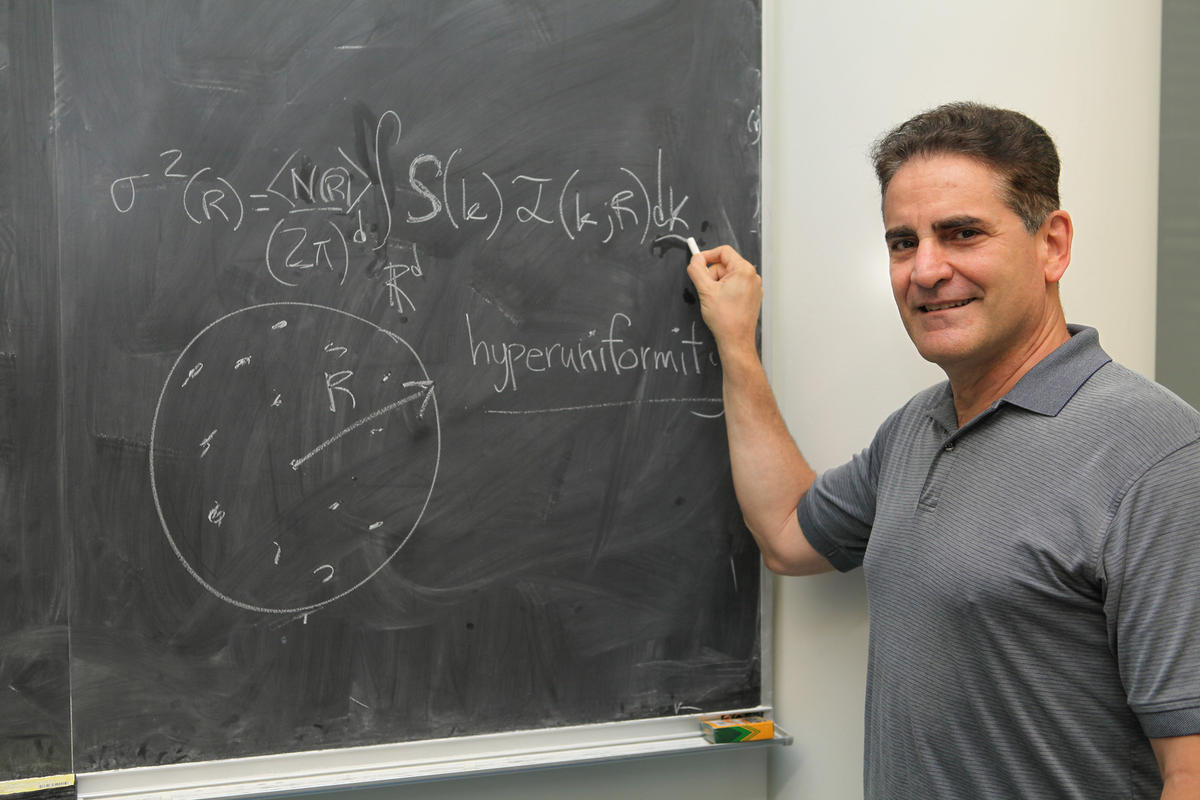Hyperuniformity found in birds, math and physics | Quanta Magazine

Since Princeton University Professor of Chemistry Salvatore Torquato began the study of a special state called hyperuniformity more than a decade ago, this mysterious state has been detected in many unusual inorganic and physical systems. In 2014, Torquato and collaborators discovered the first biological instance of hyperuniformity in the eye of a chicken.
In a piece published online on July 12, Quanta Magazine tells the story of how this ‘hidden order’ was found in nature. In this excerpt, Torquato describes hyperuniformity in simple terms:
Torquato and a colleague launched the study of hyperuniformity 13 years ago, describing it theoretically and identifying a simple yet surprising example: “You take marbles, you put them in a container, you shake them up until they jam,” Torquato said in his Princeton office this spring. “That system is hyperuniform.”
The marbles fall into an arrangement, technically called the “maximally random jammed packing,” in which they fill 64 percent of space. (The rest is empty air.) This is less than in the densest possible arrangement of spheres — the lattice packing used to stack oranges in a crate, which fills 74 percent of space. But lattice packings aren’t always possible to achieve. You can’t easily shake a boxful of marbles into a crystalline arrangement. Neither can you form a lattice, Torquato explained, by arranging objects of five different sizes, such as the cones in chicken eyes.
As stand-ins for cones, consider coins on a tabletop. “If you take pennies, and you try to compress the pennies, the pennies like to go into the triangular lattice,” Torquato said. But throw some nickels in with the pennies, and “that stops it from crystallizing. Now if you have five different components — throw in quarters, throw in dimes, whatever — that inhibits crystallization even further.” Likewise, geometry demands that avian cone cells be disordered. But there’s a competing evolutionary demand for the retina to sample light as uniformly as possible, with blue cones positioned far from other blue cones, reds far from other reds, and so on. Balancing these constraints, the system “settles for disordered hyperuniformity,” Torquato said.
Hyperuniformity gives birds the best of both worlds: Five cone types, arranged in near-uniform mosaics, provide phenomenal color resolution. But it’s a “hidden order that you really can’t detect with your eye,” he said.
Click here to read the full story on Quanta Magazine’s website
